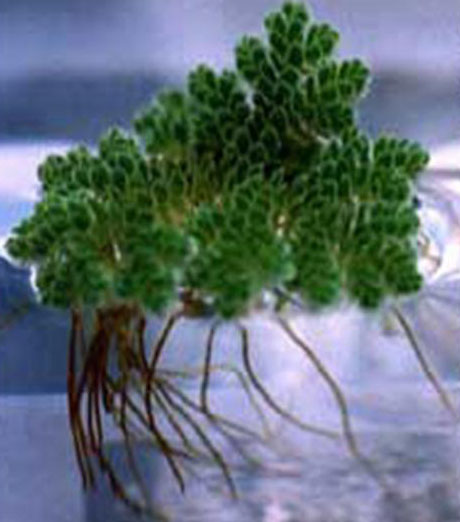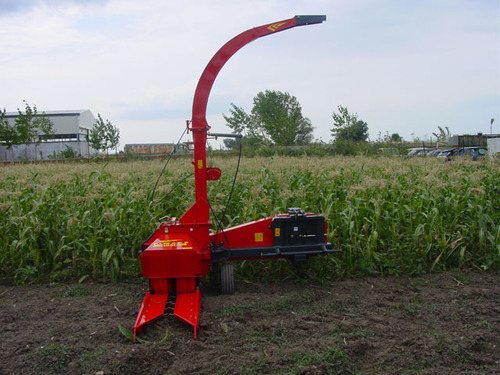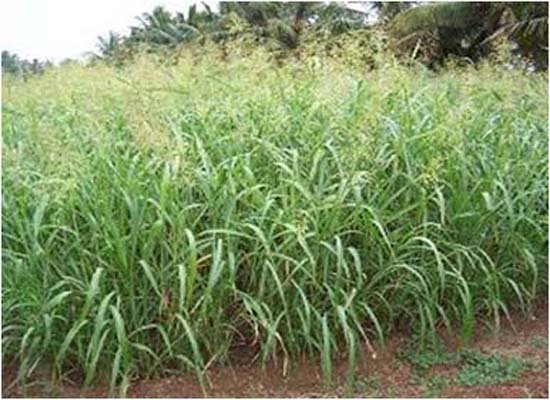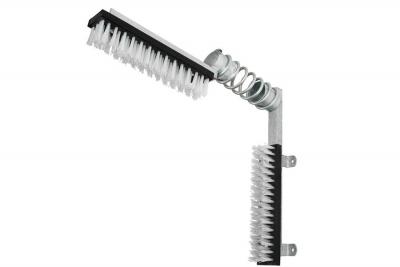thanks lot Mr. Swami and Mr Murali and both of you I have already word with. will keep in touch with you.
Milking Machine is 100% safe. For those who doubt that it will affect the cow or its yield, here is my answer:-
May I ask you another question? Can you tell me whether hand milking is practiced in any of the developed nations? For eg. Australia,USA,Denmark,New Zealand,UK. Everywhere you only see electrically operated milking machines and milking parlours. In India too this is very widely practiced in dairy farms in Hyderabad,Vizag,Cochin,Tamilnadu,Maharashtra,Punjab,U.P,Karnataka etc.
Please understand that the electric motor is run using electricity and the power ends there itself. The electrically driven vacuum pump generates vacuum which is transferred through PVC pipes or rubber pipes to the cow’s udder and the milking (pressing and leaving is done using a pneumatically driven pulsator . It oscillates between atmospheric pressure and vacuum generated resulting in the rubber liner inside the teat cup expanding and collapsing, thereby pressing the cow’s teats. It is a wrong belief that the milk is sucked out of a cow. ITS NOT SUCKING, ITS PRESSING ONLY. Even if you unknowingly delay removing the cluster attached to a cow even after milk let down stops, nothing will happen. After milk let down stops, what happens if you sit down there and continue milking by hand???. The same thing happens with the machine.
Please visit www.tarimak.com . Click on the english flag on the right side top of the opening window to see the site in english.
No need of any worries.Its 100% safe.You get clean milk without froth unlike hand milking. Use Calf bottles to feed calves after milking to save the cows from teat injury due to calf biting.
Happy Milking!!
Murali Krishnan
9447088234
srivinayakatvm@gmail.com
- Please understand that you can chill milk up to 4 degree C and not below that. You cannot freeze milk as it can create many issues.
- Chilled milk taste won’t change.
- Chill the milk to 4 degree C and transport it in insulated tankers. Better to be equipped for slight chilling in the tanker itself in case the the temperature rises above 4 degree C.
- The present cost may be nearly 3-4 lakhs.
- The most cost efficient way of storing milk will be in a Bulk Milk Cooler Direct Expansion type with digital temperature indicators. The cooler shuts off automatically when it reaches 4 degree and starts on its own when the temperature rises.
- EMT cost may be below Rs.35000/-
- Milk storage in Liquid form only in insulated & refrigerated trucks , to avoid loss of temperature.
- Shelf life-1 day if the milk is not disturbed and temperature maintained in insulated Bulk Milk Coolers with Digital Temperature indicators with auto on/off set up.
MuraliKrishnan
srivinayakatvm@gmail.com
9447088234
Dear all
I’m planning to start a diary farm in my native place, at krishnagiri dist., Tamilnadu - about 125 kms away from Bangalore.Please do let me know about the fodder to be grown for it. I have planted co-3 for about two acres which has come up well. My query is, I want to grow more fodder of other varieties which have nutrition and protien, fibres in it.But I have my problems in my land, such as, my soil is saline and EC is on the higher side. I have coconuts in my field and grown co-3 fodder as an intercrop. Please do let me know about the right kind of fodder that I can grow in my farm. Will lucerne grow well in the given conditions. I want saline and shade resistant fodder types or else atleast saline resistant fodder crops. Please do advice regarding these. I’m desperately in need of these information.
Regards
Gulab.
Dear Farmer,
You can make azolla if you arrange two layer bricks in a big square and cover it with tarpaulin and grow azolla in it. Fill it with plain water. No permanent structures needed. Try growing and if it comes out well, try for permanent cemented ones with twoi or three layer bricks with a drain flowing out. Co4, Maize,fodder cholam also can be tried.See pictures attached.
Murali Krishnan
srivinayakatvm@gmail.com
See attached PDF for fodder cultivation and feeding method.
I dont own this document I googled it for my reference and posting it for forum members use.
fodder-bible.pdf (791 KB)
Dear Dairy Farmers,
As drought hit us this year KMF has announced fodder bank scheme(silage bank).
here is some tips and techniques for silage making. The reality about silage here in my are is every farmer is trained on this, but none want to prepare because it is labouriouse.
Digging pit, using chaff cutter etc. attached PDF shows silage making in drums not in silo pits.
I request with dairy farmers if they have found out a easy way for silagemaking, PLEASE SHARE.
fodder-trees.pdf (845 KB)
silage-making-small-farmer.pdf (1.12 MB)
Hi? Can you come up with the details of fodder crops growing to feed animals in Hassan area? You can cover Sakaleshpura taluks plantations also.
It is not my individual effort.
KMF is preparing silage for summer. They are expecting there will be severe shortage of fodder from Jan onwards.
Good Topic And attachment Sri… Very informative and useful ![]()
Some notes on milking and milk let down procedure in cows/buffaloes,Some Milking routines:-
One stimulus or a combination of the external stimuli may initiate the milk ejection reflex like:-
- The physical touch of the suckling calf or of the operator cleaning the
teats (which is sensitive to touch and temperature). - The sight of the calf
- The sound of milking machine.
From these stimuli, the brain sends a signal to the posterior pituitary, a gland at the base of the brain, which releases the hormone “oxytocin” into the blood stream. The blood transports the oxytocin to the udder where it stimulates the contraction of tiny muscles surrounding the milk filled alveoli. Contraction occurs 30 to 60 seconds after stimulation. The squeezing action increases the intramammary pressure and forces the milk through the ducts of the gland and the teat cistern.
The action of oxytocin lasts only for 6-8 minutes because its concentration in the blood decreases rapidly. It is critical to attach teat cups after udder preparation in cows and its better to strip using hands just to ensure milk let down in buffaloes after teat washing. Ensure that there is no disturbance to the cow/buffalo during milking time (sound, new people, pain, excitement, fear).
Pulsation of 60:40 ration means milking phase lasts for 0.6 seconds and the massage phase 0.4 seconds. The liner of a milking machine opens and closes 40 to 60 times a minute. In a pulsation cycle, the milking phase is usually longer than the massage phase
For Those who have not seen or experienced a milking machine, may do the following steps in order to understand the working of the machine.
Please insert your finger inside the cluster used for milking cows in the milking can. It will only press and leave, press and leave your finger, exactly like how you milk a cow using your hand. Here the rhythm is the key. See for example, today you are relaxed, have time, you milk slowly. Tomorrow there must be some marriages, you are in a hurry. You need to go early. So you do milking faster. That means, the same person milking in 2 days will be in different fashion.
You cannot create damage to the cows teats even if you keep the cluster there ( in the udder of the cow) for long because of the pressure induced, which is measured using a vacuum gauge and a vacuum regulator. These comments were spread by the villagers in the 1980’s when milking machines were launched and getting popular in India. Now a days even illiterate people won’t have these doubts as machines have become common everywhere. No fears that the machine will injure the cow’s teats. Remember to buy machines without oil lubrication as in oil based machines vacuum pump gets choked fast when dust from the atmosphere gets mixed with oil and ensuring the farmer recurring expenses every month. Try to keep machines where dust is minimal. Remember that the pulsator is the heart of the machine and it must have alternate pulsation and not all 4 teats at a time which is not correct, preferably pneumatic type, oil free.
MILKING IS A TEAM EFFORT BETWEEN THE COW, THE MACHINE, THE OPERATOR AND THE CALF A SILENT PARTNER IN THE ENTIRE EPISODE.
Milking machines milk the cows in the same fashion and rhythm everyday even if the person changes the next day. In Hand Milking when the person changes it affects the cow as the speed of milking of another person will be different and most of the milker’s smoke or chew tobacco while milking.
• Milking machines operates on electricity and its better to choose machines without oil as you need not incur recurring expenses.
• The heart of the milking machine is the Pulsator which helps in pressing the teats of the cow, and it must have alternate pulsation preferably pneumatic oil free type having 60:40 pulsation ratio. It should press opposite teats of the cow like “X”. Pressing must be alternate and not all the 4 at a time like you see in low quality milking machines produced in countries from where we get throw away type tape recorders and dvd players.
• The vacuum pump must be preferably oil free type which will help you to avoid recurring expenses having a capacity of 180 litre/minute, connected to an electric motor. It must have a vacuum tank if you need to milk more than 1 cow at a time. Today there are machines which can milk 1/2/5/8/10/12 cows at a time. The motor capacity and the vacuum tank size differ with the number of cows to be milked at a time.
• Irrespective of the number of cows to be milked, you can calculate @ 8-10 cows in one hour & the can capacity will be of 30 litres, SS make.
• Hygienic milking : Few steps are to be followed.
- Wash the udder of the cow first with clean water. Wipe it with a towel.
- Strip the cows using your hand just to ensure that cows are ready for milk let down.
- One towel may be used for wiping the teats of the cow. One towel for one cow. Small hand towel. Put it for washing after that
- Attach the teat cups. You may leave the cow now. It takes 6-8 minutes to milk one cow irrespective of the yield.
- The milk from the 4 teats of the cow will end in 4 different times. There is no harm in the machine pressing the teats of the cow until you see that milking is over now from the 4 teats of the cow. Please note that the milk stops at 4 different times on all the 4 teats and not all the 4 at a time.
- Once you see that milk is over on all the 4 teats, just press the cluster using your hand just to give a downward pull. See that you don’t press too much. It will give the feeling like how we do normally with our hands when you are about to leave one teat after you finish milking- you press hard on the teat plus a downward pull.
- Once you complete milking and remove the cluster from the udder ( you will have to remove only one teat cup by inserting your finger between the teat and the rubber liner used for milking the cow. This action will let the air from outside enter the teat cup and it loosens the grip of the teat cup resulting in other teat cups also loosen. You remove only one teat cup and the rest three gets automatically detached, just pull the cluster )
- Its better to use Iodine spray on the teats after milking. Better than teat dip cups use teat spray or use non returnable dip cups to prevent infection from one teat to another.
- Make sure you clean the milking cluster using three brushes like Liner Cleaning brush having big bristles at one end and a narrow one at the other end, and a long milk tube brush, a thin brush to clean the milk passage holes inside the teat cup.
- Cluster assembly will have a top thick plastic and a bottom transparent piece where in you can see milk flowing out from each teat.
Happy milking!!.
Murali Krishnan
srivinayakatvm@gmail.com
Hi All,
In some countries they have started growing barley/wheat on weekly basis and it seems good technology if you don’t have enough land to grow green feed.
theprairiestar.com/news/agri … 002e0.html
Is it some thing viable for India or not? because we can manage 21-22 degree temperature easily…
EXPERIENCE PRODUCERS PLEASE REPLY!
Thanks,
Dear Sir,
Myself Rajkiran Thakur a Pharmacist with some Land Holding in my village. I Have decided to start a Dairy Farming project. Sir I want to know the development cost, construction cost, the machinery cost for a Herd size of 500 cows in a period of two years. I have a 8 acres of land. Sir I also want to know the running cost and the economics of the project. Sir, I will be very gladful to know all these things from you.
Thanks & Regards
Rajkiran Thakur
+919011044217
Dear Rajkiran,
with 8 Acres of land you can have 40-50 Animals.
for Machinary/Equipment/Barn costs for 10 animal is 12 to 14 Lacs.
You can start with 10 animal after gaining experience you can increase herd size.
Hi,
I would like to start dairly farming, Bank manager asked me to get Project report. Can you guide where will i get project report.
email id -gb230052@hotmail.com
Regards,
Prasad
Please find below project report. Kindly note the subsidy is not available now. Thesereports are not prepared by me, available on internet.
you can also configure report from www.dairyfarmguide.com
FARM MODEL OF DAIRY UNIT OF 10 CROSSBRED COWS.pdf (315 KB)
DVP-DairyFarmProjectReport-CrossbredCowSmallscale.pdf (206 KB)
Thank you Murali… thank you very much… May i get a chance to visit your farm ?
Regards,
Anshad
+918547930363
Dear Mr.Anshad,
You may be surprised to know that i don’t own a dairy farm but i worked for nearly 20 years having jobs which made me run behind cows. Now I am selling milking equipments imported from Turkey. I visited farms there also in Turkey. Right from 10 cows to 500/1000 cows, i know the systems needed. In today’s world, mechanization is the key. Let it be milking, feeding, manure scraping, cow identification etc. I can take you to farms around provided you let me know your target in mind.
Keep in touch!!
regards,
Murali Krishnan
9447088234
Machine Milking Procedures:-
Give cow something to eat during milking.
Wash udder to make sure teats are clean. Its better to use disposable teat wipes or a small hand towel to wipe the teats, leave it for laundering after each wipe.
Turn the machine on, and then keep the claw valve in off position to build enough pressure in the bucket.
Watch the pressure gauge; wait till it reaches 380 mm hg.
Put the teat cups as quickly as possible from the Left front first, Right back next, left back next and right front at last.
Be careful not to loose pressure in the bucket or cups, failing which the attached teat cups will fall down.
Take each teat cup with folded liners or the short milk tube in bend position ensuring that vacuum pressure is not lost.
You will see the milk flowing in the milk tube which is a transparent hose.
You can see the milk flow stopping in the milk sight glass or on the transparent bottom of the cluster or on the transparent milk tube.
Remove the vacuum stop button ensuring smooth release of one teat cup using your finger to anyone of the teat, in which the teat cup and liner is attached.
Turn the vacuum cock off, and remove lid from the bucket.
Transfer the milk to a collecting vessel.
Move to the next cow.
Once milking is over, take half bucket of warm water, and add 5 ml of alkaline detergent to half bucket of water. Mix well using a brush. Put the cluster in the bucket, switch on the machine. It takes the warm water and cleans the cluster, milk tube, liners and finally we need to clean the milk collecting can using a round brush. Rinse it again using fresh cold water.Normally there are 3 brushes given free with the machine. This includes, combination brush having a round bristle on one end and a straight thin bristle at the end and a thick round one after some length, which needs to be inserted in the teat cup having liner, a circular motion of the brush and forward and backward movements helps clean the teat cups properly.
Murali Krishnan
Sri Vinayaka Agencies
Trivandrum
9447088234
Automatic Cow brush:
Grooming has factors of biological importance to cows. The most important thing is the reduction of the number of parasites and organisms on the cow’s coat. Stationary brushes consist of one horizontal brush and one vertical brush. These are often mounted on posts around the free stall barn or at the ends of the feed alley. Stress levels may decrease by using the brush. Rotating cow brushes may also be equipped with two rotating brushes, one horizontal and one vertical. They start to rotate on contact, due to the software applied and developed, the brush start alternating their departure at once in the right once in left. This allows for less wear and deformation of the bristles, while retaining their hardness long. The speed of rotation is designed to make a friendly location for the cows. The polymer bristles have the right length and hardness to stimulate the blood circulation while helping to keep the cows clean and quiet with a nice massage. The cow brush with automatic locking in the case of forced stop making them safe and unique, with sensors for over voltage / under voltage or rise in temperature regulates the proper functioning.
Advantages: -
- They give the most comfort for the cow.
2.Takes care of Parasites, old hair and skin.
3.Easy to install on wall or on a post.
4.Very Low on energy consumption. - Easy to clean
- Suitable for 50 to 60 cows.
7.Promotes cow traffic - Increase animal health and welfare
- Reduction in veterinary expenses
- Improves the overall performance of your herd.
The major daily activities of a dairy cow are: Lying, Eating and Milking
Murali Krishnan
srivinayakatvm@gmail.com
9447088234




